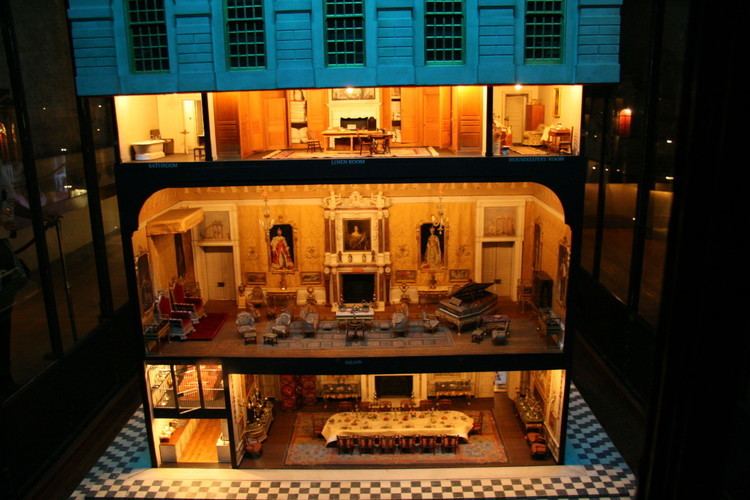Phone +44 1753 831118 | ||
 | ||
Hours Open today · 10AM–3:30PMTuesday10AM–3:30PMWednesday10AM–3:30PMThursday10AM–3:30PMFriday10AM–3:30PMSaturday10AM–3:30PMSunday10AM–3:30PMMonday10AM–3:30PMSuggest an edit Similar St George's Chapel - Windsor, Windsor Castle, Dollhouse Museum, Windsor Great Park, Legoland Windsor Resort | ||
Queen mary s dolls house in detail
Queen Mary's Dolls' House is a doll's house built in the early 1920s, completed in 1924, for Queen Mary, the wife of King George V. The idea for building it originally came from the Queen's cousin, Princess Marie Louise, who discussed her idea with one of the top architects of the time, Sir Edwin Lutyens, at the Royal Academy Summer Exhibition of 1921. Sir Edwin agreed to construct the dolls' house and began preparations. Princess Marie Louise had many connections in the arts and arranged for the top artists and craftsmen of the time to contribute their special abilities to the house. As a result, the dolls' house has an amazing collection of miniature items that actually work: "There are shotguns that 'break and load' (and may even fire), monogrammed linens, ... 'electricity and lifts, a garage of cars with engines that run.'" It even has running water through its tiny pipes. It was created as a gift to Queen Mary from the people, and to serve as an historical document on how a royal family might have lived during that period in England.
Contents
It showcased the very finest and most modern goods of the period. Later the dolls' house was put on display to raise funds for the Queen's charities. It was originally exhibited at the British Empire Exhibition, 1924–1925, where more than 1.6 million people came to view it, and is now on display in Windsor Castle, at Windsor, Berkshire, England, as a tourist attraction, especially to people with an interest in miniature houses, furniture, and carpets.
It was made to a scale of 1:12 (one inch to one foot), is over three feet tall, and contains models of products of well-known companies of the time. It is remarkable for its detail and the detail of the objects within it, many of which are 1/12 replicas of items in Windsor Castle. These were either made by the companies themselves, or by specialist modelmakers, such as Twining Models of Northampton, England. The carpets, curtains and furnishings are all copies of the real thing, and even the light fittings are working. The bathrooms are fully plumbed, with a flushable toilet and miniature lavatory paper.
In addition, well-known writers wrote special books for the house's library, which were bound in scale size by Sangorski & Sutcliffe. Sir Arthur Conan Doyle contributed the short story "How Watson Learned the Trick", and the ghost-story writer M. R. James wrote "The Haunted Dolls' House". A. A. Milne contributed "Vespers." Other authors included J. M. Barrie, Thomas Hardy, Rudyard Kipling and W. Somerset Maugham. (George Bernard Shaw rebuffed the princess's request for a tiny volume of his work, and Sir Edward Elgar also refused to contribute.) Painters, including Eli Marsden Wilson, also provided miniature pictures. Even the bottles in the wine cellar were filled with the appropriate wines and spirits, and the wheels of motor vehicles were properly spoked. Queen Mary's purchases brought media attention to specialist furnishers such as Dorothy Rogers, who created needlework miniature carpets for the house. Even viewing a high quality photo of the interior will not reveal it is in fact a collection of miniatures.
There is a hidden garden revealed only when a vast drawer is pulled out from beneath the main building. This has replicas of greenery and garden implements and follows a traditional ornamental garden theme.
